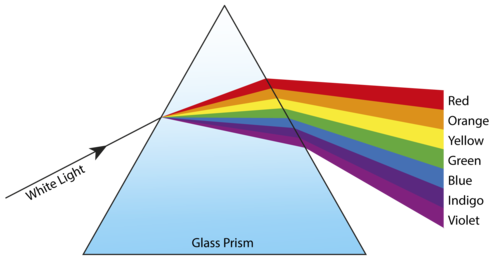PDF chapter test TRY NOW
You must have seen and appreciated the spectacular colours in a rainbow.
How could the white light of the Sun give us various colours of the rainbow?
Before we take up this question, we shall first go back to the refraction of light through a prism. The inclined refracting surfaces of a glass prism show an exciting phenomenon.
Let us find it out through an activity.
Procedure:
- Take a thick sheet of cardboard and make a small hole or narrow slit in its middle.
- Allow sunlight to fall on the narrow slit. This gives a narrow beam of white light.
- Now, take a glass prism and allow the light from the slit to fall on one of its faces, as shown in the figure.

Dispersion of white light by the glass prism
- Turn the prism slowly until the light that comes out of it appears on a nearby screen
What do you observe?
You will find a beautiful band of colours.
Why does this happen?
The prism has probably split the white incident light into a band of colours.
Observe the colours that appear at the two extremes of the colour band.
What is the sequence of colours that you observe on the screen?
The different colours seen are Violet, Indigo, Blue, Green, Yellow, Orange and Red, as shown in the figure.
The acronym VIBGYOR will assist you in remembering the sequence of colours. The band of the coloured elements of a light beam is called its spectrum. You might not be able to see all the colours separately. Yet, something makes each colour distinct from the other. The splitting of light into its component colours is called dispersion.
